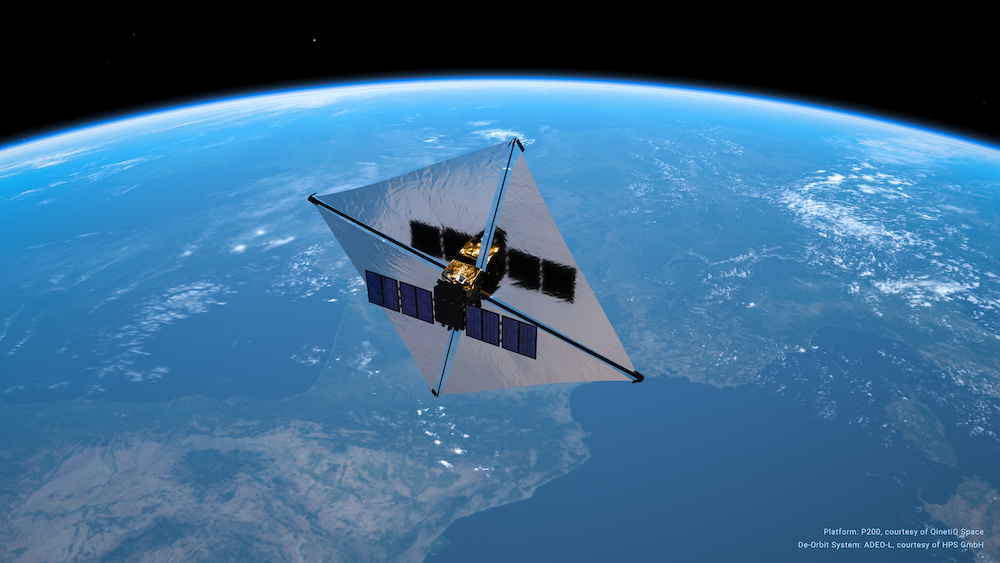In this blog, we have often discussed de-orbiting satellites at their end of life (EOL). In low-Earth orbits (LEO), operators shall ensure that their satellite re-enter within 25 years after their end of life to comply with the Space Debris Mitigation Requirements.
Clean Space is carrying out several studies to design innovative systems to optimise deorbiting strategies from low-Earth orbit. The objective is to support the European space industry to comply with the space debris mitigation requirements and thus, increase their global competitiveness.
Selecting the right strategy and associated technology to deorbit depends on whether the spacecraft is allowed to perform an uncontrolled re-entry or has to perform a controlled re-entry. The ESA Space Debris Mitigation Policy for Agency Projects states the following:
“For ESA Space Systems for which the System Requirements Review has not yet been kicked off at the time of entry into force of this Instruction, the casualty risk shall not exceed 1 in 10,000 for any re-entry event (controlled or uncontrolled). If the predicted casualty risk for an uncontrolled re-entry exceeds this value, an uncontrolled re-entry is not allowed, and a targeted controlled re-entry shall be performed in order not to exceed a risk level of 1 in 10,000.”
As part of the Cleansat project, ESA has been investigating deorbiting systems for controlled and uncontrolled re-entry. When a spacecraft is allowed to perform an uncontrolled re-entry (this concerns mainly satellites below 1,000kgs in low Earth orbits), passive deorbiting systems are efficient enough to slow down a spacecraft and thus, reduce its altitude until it re-enters the atmosphere. The intention is to accelerate the spacecraft’s reentry and thus minimise the time spent in space after the end-of-life . Small spacecrafts will burn up during re-entry.
The most common passive devices for uncontrolled re-entry encompass drag augmentation devices and tethers. Sails are an example of passive devices that could deorbit low Earth orbits satellites. HPS GmbH, a German company, worked under an ESA GSTP contract in developing such a sail named ADEO-2.
The ADEO-2 subsystem is a scalable drag augmentation device that uses the residual Earth atmosphere present in low Earth orbit. For initiation of the de-orbit manoeuvre a large surface is deployed to multiply the drag effective surface of the satellite. This increases the drag force and accelerates the decay in orbit altitude. This scalable sail should be able to de-orbit spacecrafts between 100 – 1000 kg.
ADEO-2 (also known as ADEO-L) consists of 5 x 5 m dragsail deployed by four deployable CFRP booms under control of own onboard electronics. The subsystem can be activated from the spacecraft once the mission is finished or can be autonomously activated. The latter is extremely important in the case of failure of the spacecraft. An on-board battery can deploy the sail when receiving the message that the satellite is dead from the electronics (called “watchdog routine”).
Thanks to this design, the ADEO-2, and the whole ADEO family, can be “100% passive”. A smaller version of the sail, ADEO-N, was already demonstrated during a flight with Rocket Lab in the mission ‘Its Business Time’ and has currently been launched onboard the satellite carrier ION from D-Orbit SpA in June 2021 with Falcon from SpaceX .

A drag sail is supposed to be a cheaper way to ensure a short de-orbit time. Indeed, many small spacecrafts in LEO embark a propulsion system only to comply with the re-entry requirements. Having a passive deorbit devices on board could save a lot of money and complexity of the spacecraft design. For example, it is estimated that the use of passive de-orbiting systems could save up to 20% in mass.
Uncontrolled re-entry is of course an option that operators would favour as controlled re-entry usually implies tougher constraints for the spacecraft. These constraints logically lead to higher complexity in the design and higher costs of the entire mission. However, one must always remember that uncontrolled re-entry is only allowed for missions compliant with the 10-4 requirement.





Discussion: no comments